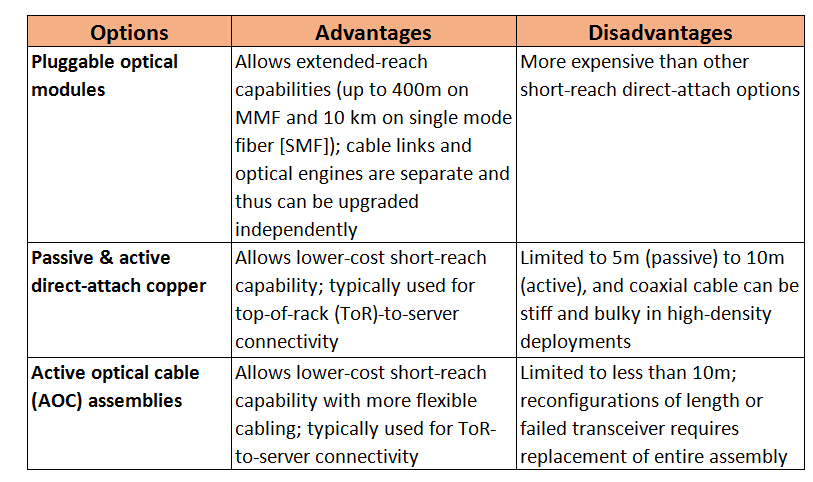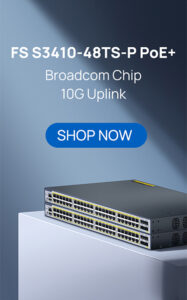High speed and wide bandwidth demands drive data centers to consolidate into more complex systems. The speed of data center now is increasing to 40 Gbps and eventually to 100 Gbps. Thus, new optical technologies and cabling infrastructure are required. In this post, I will introduce some commonly used fiber optic cabling connectivity options for 40Gbps infrastructure.
Pluggable Optical Modules: 40G QSFP+ Transceivers
As we know, fiber optic transceiver is an electronic device that receives an electrical signal, converts it into a light signal, and launches the signal into a fiber. It also receives the light signal, from another transceiver, and converts it into an electrical signal. It is the key component in fiber optic transmission. The basic interface of 40G pluggable optical modules are 40GBASE-LR4 and 40GBASE-SR4 in QSFP+ form factor, such as Cisco QSFP-40G-LR4 and QSFP-40G-SR4.

40GBASE-LR4 QSFP+: 40GBASE-LR4 transceiver support with a link length up to 10 kilometers over 1310 nm single mode fiber, LC Connector. It is most commonly deployed between data-center or IXP sites with single mode fiber.
40GBASE-SR4 QSFP+: 40GBASE-SR4 transceivers are used in data centers to interconnect two Ethernet switches with 8 fiber parallel multimode fiber OM3/OM4 cables. It can support the transmission distance up to 100 m with OM3 fiber and 150 m with OM4 fiber. The optical interface of 40GBASE-SR4 QSFP+ is MPO/MTP.
In addition, for single-mode fiber transmission, there are 40GBASE-LR4 Parallel Single Mode (PSM) transceivers which are used to provide support for up to four 10Gbps Ethernet connections on a QSFP+ port over single mode fiber at distances up to 10 km. For multimode fiber transmission, QSFP+ extended SR4 transceivers are developed which is designed with optimized VCSEL with better performance of RMS spectral width compared with QSFP+ SR4. QSFP+ extended SR4 transceivers can support transmission distance up to 300 m with OM3 fiber and 400 m with OM4.
Passive & Active Direct Attach Copper Cables
The QSFP+ passive or active direct attach copper cables are designed with twinax copper cable and terminated with QSFP+ connectors. The main difference between passive QSFP+ DAC and active QSFP+ DAC is that the passive one is without the active component. They provide short distance (same shelf) inexpensive connectivity at up to 40Gbps rates and operate 4 independent 10G channels using the QSFP connector footprint. Each of the four channels can operate at multi-rate speeds Gigabit to 10Gbps.

Active Optical Cable (AOC) Assemblies
Active optical cable, namely AOC brings a more flexible cabling than direct attach copper cables with the advantages of lighter weigth, longer transmission distance and higher performance for anti-EMI. Now, 40G AOC assemblies are popular with users.

After introducing the basic options of 40G cabling connectivity, we take a conclusion for the above content in the following tables:

In addition, don’t forget there are some typical cabling components you will require when building 40G cabling, such as MTP trunk cables, MTP cassettes, LC to MTP jumpers and so on.

Fiberstore offers a comprehensive solution for 40G fiber optic cabling connectivity. What’s more, products such as 40GBASE-LR4 and 40GBASE-SR4 QSFP+ modules are in stock and can shipped in 12hrs. For more information, please visit www.fs.com.





